Field Visit to King Agaricus KA21 Outdoor Cultivation Farm in Brazil (February 25th to March 3rd, 2024)
At our company, we conduct inspections of King Agaricus KA21 outdoor cultivation sites in Brazil one to two times a year to ensure hygiene and production management.
This year, from February 25th to March 3rd, our President and CEO, Akitomo Motoi, conducted an inspection of our Brazilian farms. We would like to introduce the details of his visit in report format.
King Agaricus KA21 Outdoor Cultivation Farm Report – February 2024
Hello, I’m Akitomo Motoi from Toei Shinyaku Co., Ltd.
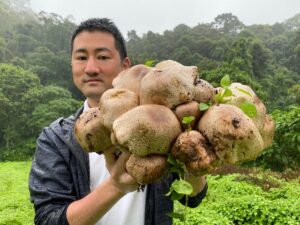
(This photo was taken during a farm inspection in 2020)
King Agaricus KA21 cultivation in open-air, which is influenced by weather conditions, is typically conducted from September to May, spanning from spring to autumn in Brazil (since Brazil is in the southern hemisphere, the seasons are reversed).
In recent years, our inspections of Brazilian farms have often been carried out in February to March, as Brazil enters its summer to autumn season. This year, too, I visited the farms from February 25th to March 3rd. This marks my 10th inspection trip to Brazilian farms.
During the last visit in March 2023, we couldn’t harvest any mushrooms due to adverse weather conditions. However, this year, I had heard that “King Agaricus KA21 cultivation and harvesting are progressing smoothly.” So, with hopes of seeing sizable mushrooms, I set out for the farms.
Arrival at the King Agaricus KA21 Open-Air Cultivation Farm
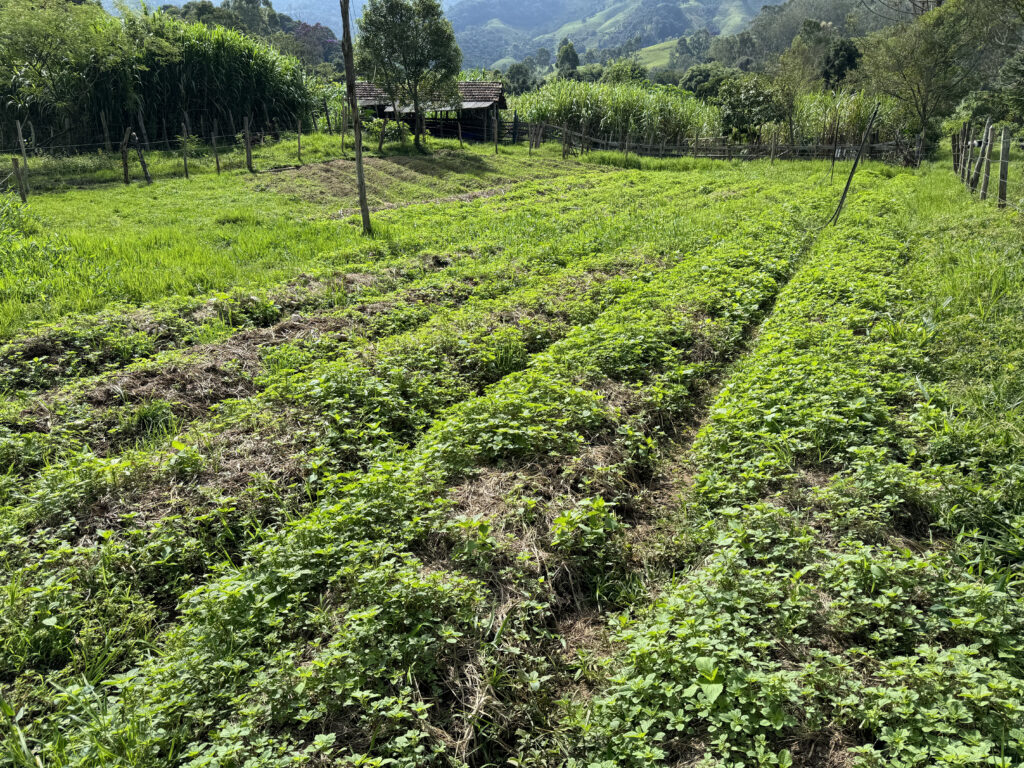
While the term “outdoor cultivation of mushrooms” may sound unfamiliar, as you can see, mushrooms are grown in fields.
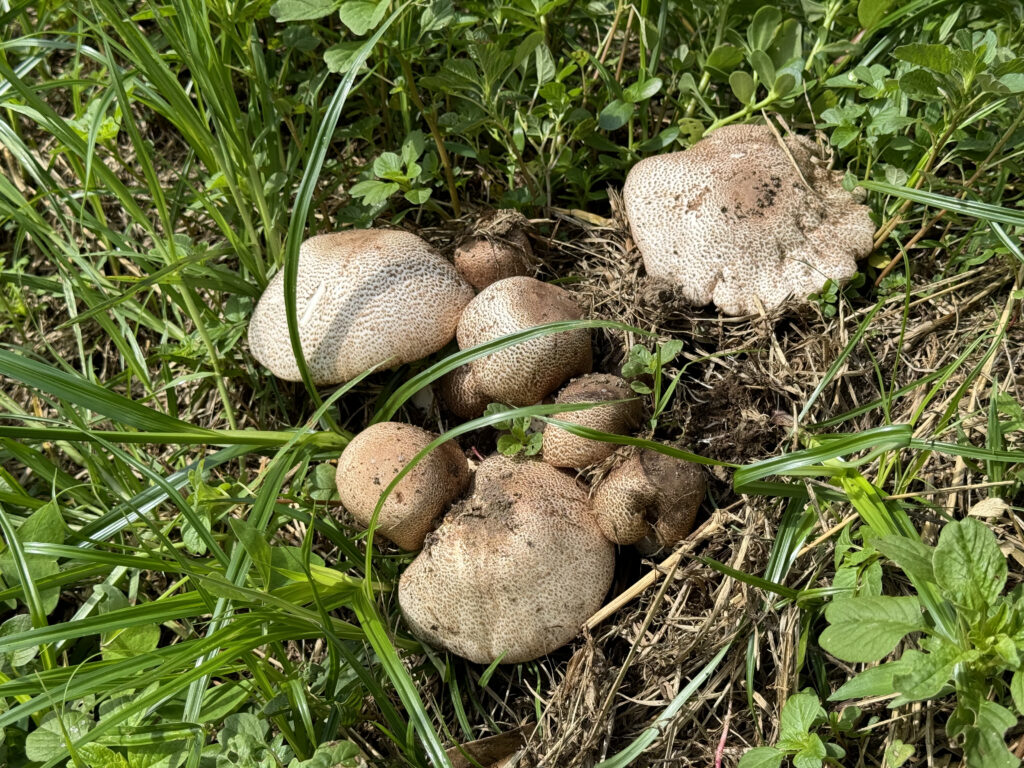
This time, mushrooms were growing well!!
They were growing directly from the ground, and Agaricus mushrooms tend to grow clustered together.
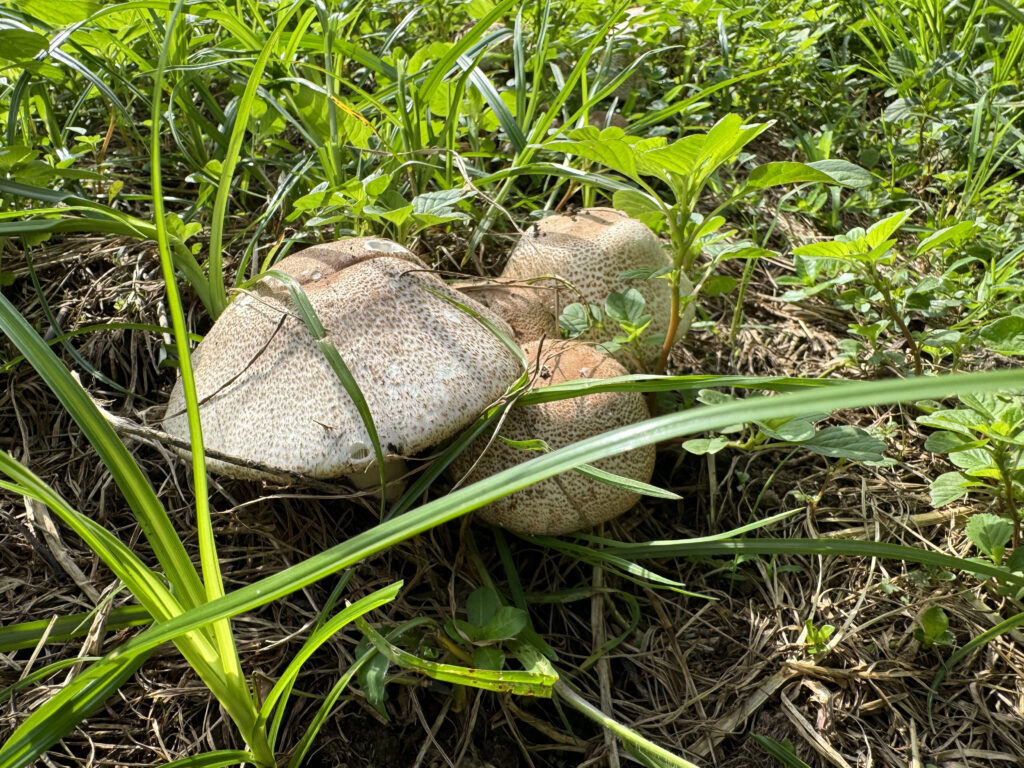
I promptly harvested the mushrooms.
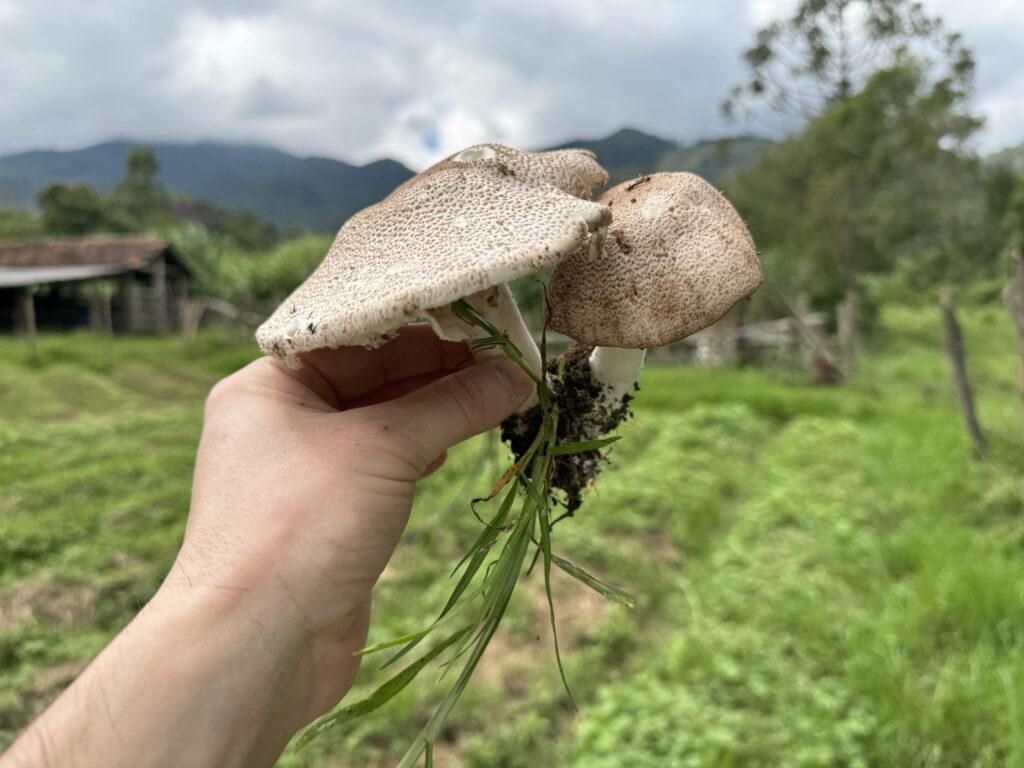
One characteristic of King Agaricus KA21 grown outdoor is its sturdy stem (the part I hold), which supports its large body, typically measuring 10 to 15 cm in diameter.
Mushroom Harvesting Process
For smaller mushrooms, we wait 1 to 2 days for them to grow larger before harvesting.
Overnight, they grow significantly.
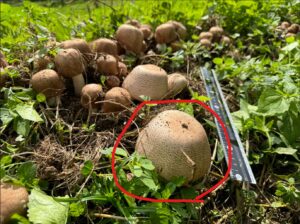
↓The same mushroom is circled in red.
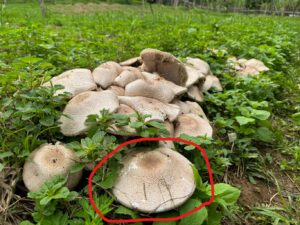
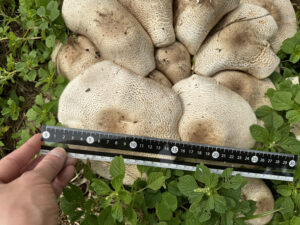
A mushroom with a cap size of 5-6 cm (top) can grow up to about 15 cm the next day (bottom left, bottom right).
Agaricus blazei / subrufescens, originally known as the “Mushroom of Sun”
Agaricus blazei / subrufescens was originally known as the “Mushroom of Sun” in Brazil, due to its strong vitality in growing even when exposed to sunlight.
Currently, natural Agaricus is scarcely harvested, and the closest to natural conditions is the “outdoor cultivation of Agaricus” which receives sunlight.
Compared to commonly grown Agaricus in controlled environments without direct sunlight, outdoor cultivated Agaricus tends to be larger in size and rich in β-glucans and vitamin D. Additionally, Brazil’s red soil is rich in minerals such as iron.

Left: King Agaricus KA21 cultivated outdoor
Right: Normal Agaricus cultivated indoor
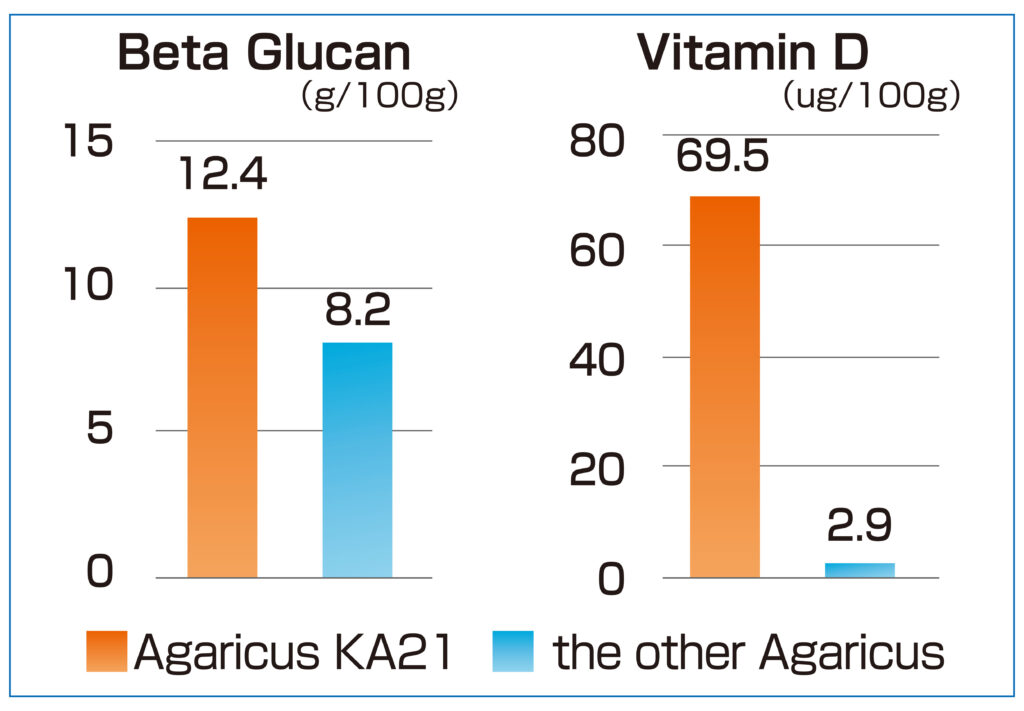
Furthermore, to consistently deliver high-nutrient Agaricus, we refrain from cultivating Agaricus twice in the same land. After Agaricus cultivation, we cultivate other crops such as sugarcane, always using new land for Agaricus KA21 open-air cultivation.
Hence, compared to typical Japanese Agaricus, it is also characterized by its richness in vitamins and minerals.
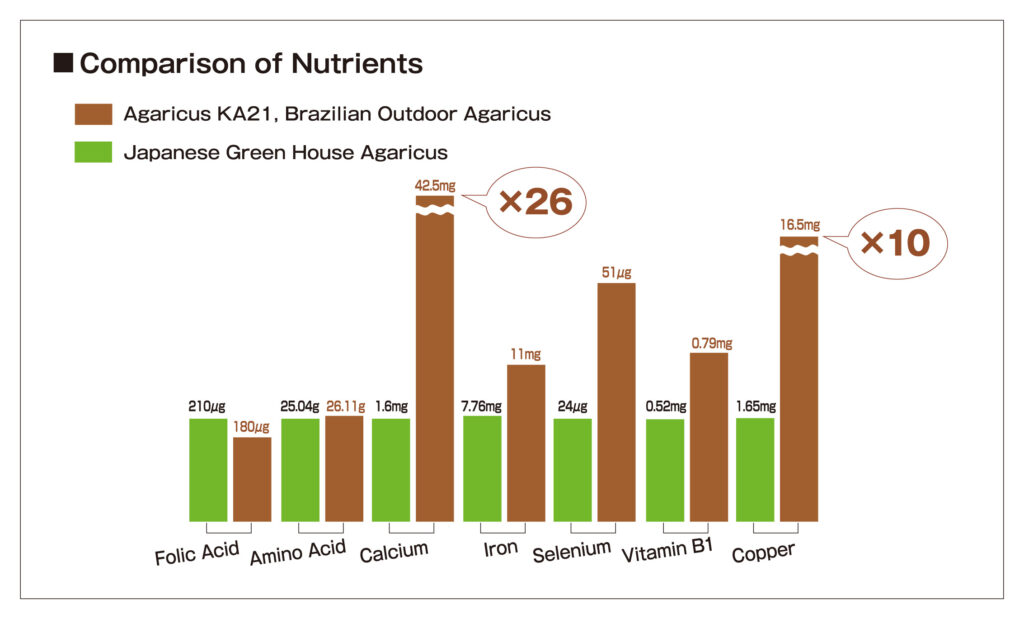
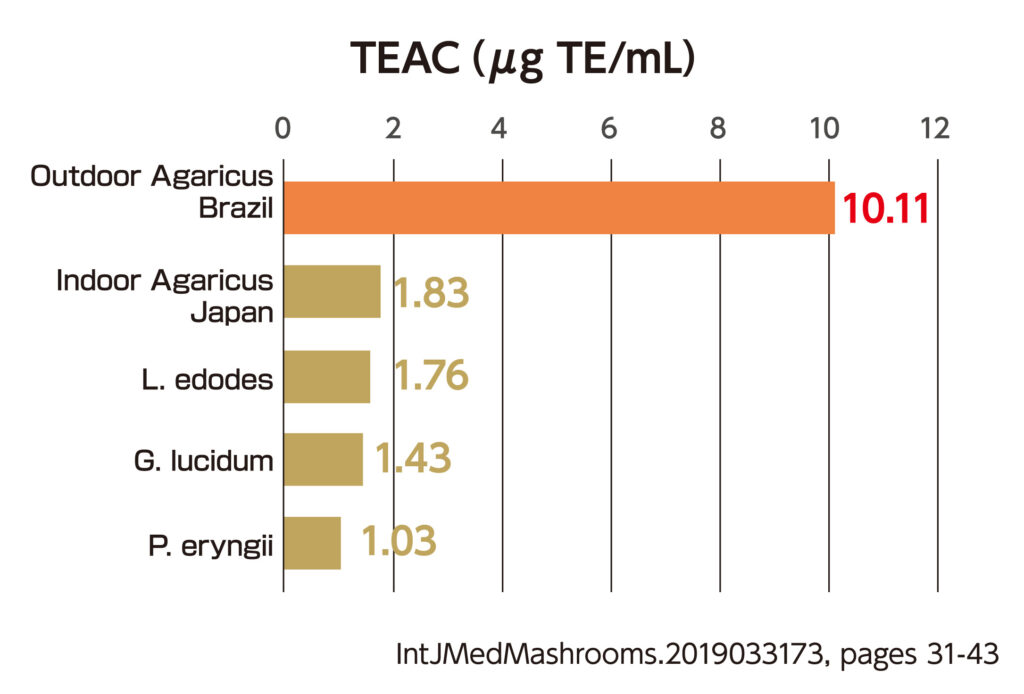
We hope you will make use of our King Agaricus KA21, grown in the vast nature and abundant sunlight of Brazil, for your health.
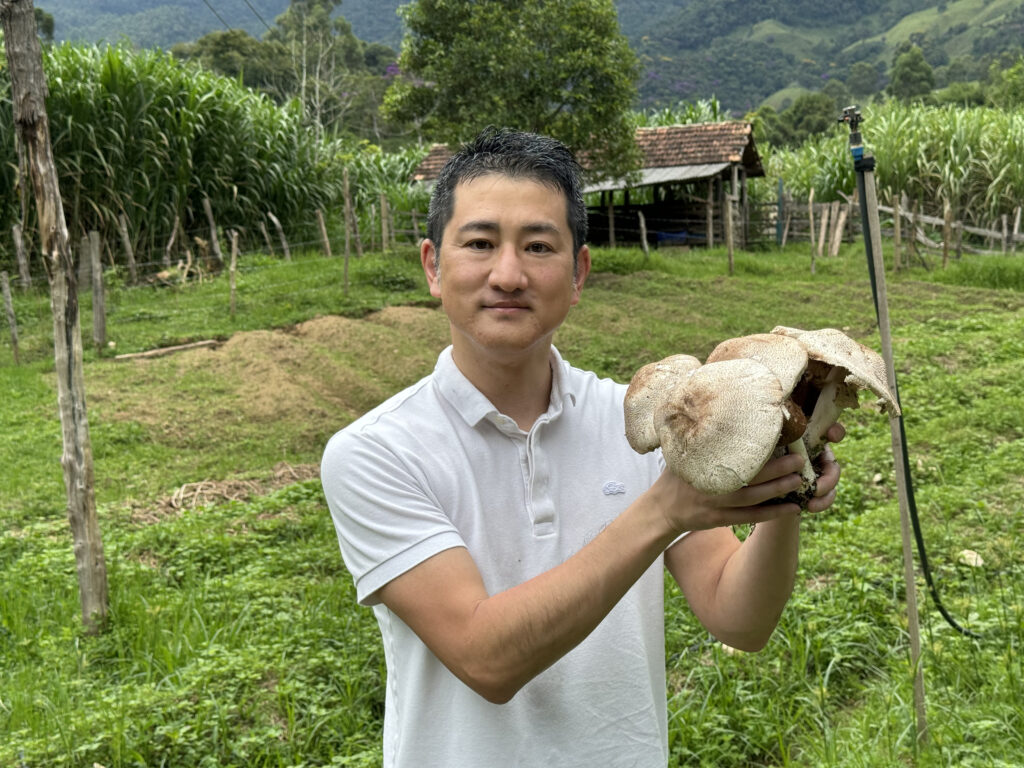
Akitomo Motoi, President of Toei Shinyaku Co.,Ltd.

